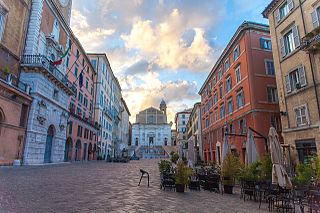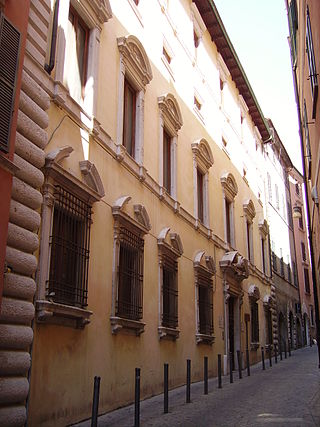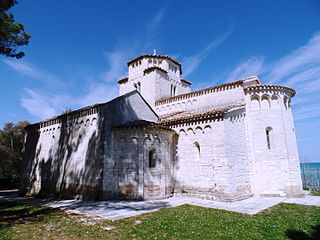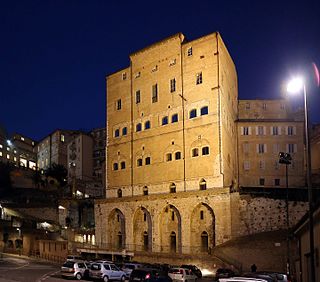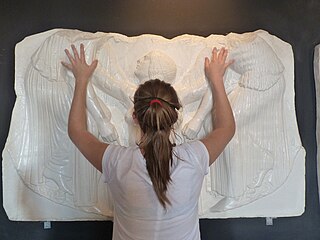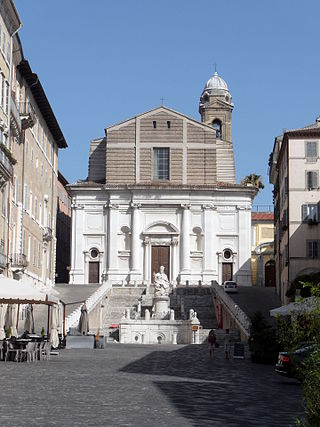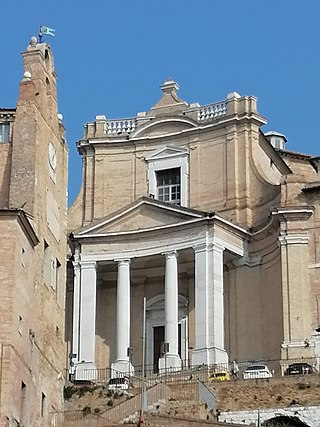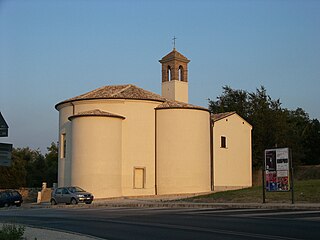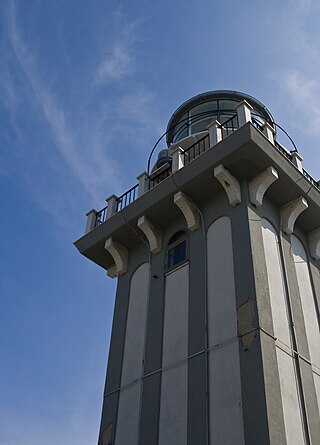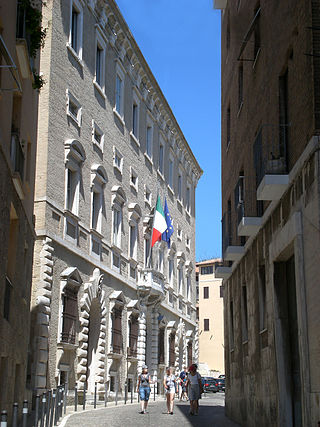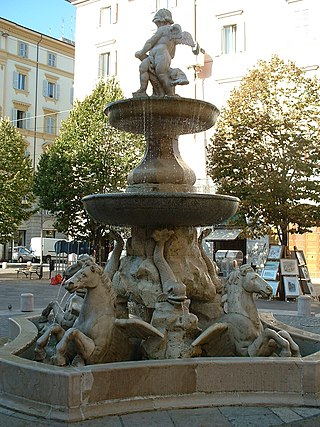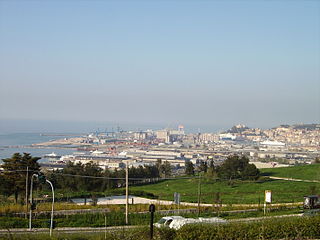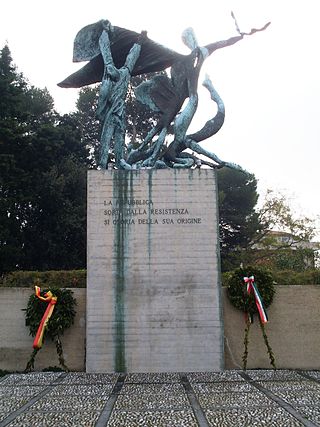16 Sights in Ancona, Italy (with Map and Images)
Legend
Welcome to your journey through the most beautiful sights in Ancona, Italy! Whether you want to discover the city's historical treasures or experience its modern highlights, you'll find everything your heart desires here. Be inspired by our selection and plan your unforgettable adventure in Ancona. Dive into the diversity of this fascinating city and discover everything it has to offer.
Sightseeing Tours in AnconaActivities in Ancona1. Piazza del Plebiscito
Piazza del Plebiscito, commonly called Piazza del Papa, is one of the four main squares of Ancona. Of them it is the oldest: it was opened in the fifteenth century; until the expansion of the city following the Italian unification, it was the central square of the city, the "large square" where the boundaries of the three terzieri met: Porto, Capodimonte and San Pietro. Today it is the center of the latter district.
2. Pinacoteca civica Francesco Podesti
The "Francesco Podesti" Civic Art Gallery in Ancona was founded in 1884. Its establishment is mainly due to the fervent interest of the Ancona painter Francesco Podesti, to whom the art collection was soon dedicated. It collects some paintings of universal value for the history of Italian art and others of great interest for the understanding of painting in the Marche from the fourteenth to the nineteenth century.
3. Teatro delle Muse
The Teatro delle Muse in Ancona is the largest in the Marche region and the 13th in Italy by capacity. It is located in the city center, near one of the main entrances to the port. There is an opera and ballet season, a symphonic music season, a concert season and a prose season, as well as a jazz festival.
4. Santa Maria di Portonovo
The church of Santa Maria di Portonovo is a precious example of the Romanesque architecture of the Marche region. Immersed in the natural scenery of the Conero Riviera, overlooking the Adriatic Sea, it is an example of balance between nature and architecture. In fact, it rises between the slopes of Mount Conero and the beach of Portonovo, a town in the municipality of Ancona.
5. Palazzo degli Anziani
The Palazzo degli Anziani in Ancona has been the ancient municipal seat of the city since the thirteenth century. It is located in Piazza Stracca, known until a few decades ago as "Piazza del Comune", in front of the Church of the Gesù. In 2011 it returned to being the seat of the city council, after a parenthesis that lasted from 1945 to 2010, a period in which the council met at Palazzo del Popolo. Together with the latter, in which the council still meets and the mayor has its cabinet, the Palazzo degli Anziani is once again the municipal seat, returning to play the role for which it was built in the Middle Ages.
6. Museo Tattile Statale Omero
The Omero State Tactile Museum is a tactile museum located in Ancona, in the Marche region. The institute makes art known through touch, giving visitors the opportunity to see with their hands. Created to promote the integration of people with visual impairments, it is a space accessible to all.
7. Chiesa di San Domenico
The church of San Domenico di Ancona is located in Piazza del Papa, the main square of the San Pietro district and one of the four main squares of the city. With its façade, it occupies one of the two short sides of the square, at the top of a staircase.
8. Chiesa del Gesù
The church of the Gesù is a Catholic place of worship in Ancona, located in front of the Palazzo degli Anziani, in Piazza Benvenuto Stracca, the ancient Piazza del Comune. The full title is "Church of the Most Holy Name of Jesus". It is the work of Luigi Vanvitelli.
9. Monumento ai Caduti
The Monument to the Fallen of the First World War in Ancona is located in Piazza IV Novembre, in the Passetto district; in Ancona it is simply called "the Monument", par excellence. It is located at the end of the long Viale della Vittoria and is connected to the Passetto beach below through a wide staircase which, at a certain point, divides into two semicircular ramps.
10. Ex Chiesa di Sant'Agostino
The former church of Sant'Agostino is located in Ancona. The building, originally from the fourteenth century, was completely renovated in the seventeenth century, by Luigi Vanvitelli. In the first years after the Unification of Italy it was used as a barracks and profoundly transformed. For its artistic value, the richly carved portal, a fifteenth-century work by Giorgio da Sebenico, was spared; in it Gothic and Renaissance art blend harmoniously, as is typical of the Adriatic Renaissance.
11. Chiesa di Santa Maria Liberatrice
The church of Santa Maria Liberatrice is probably the smallest church open to the public in the city of Ancona. It was built in the sixteenth century on a previous sacred building of the thirteenth century; it was the Municipality and not the ecclesiastical authorities that promoted its reconstruction, as can be seen from the civic coat of arms above the access portal. It is in fact a votive church, that is, built by popular vote following the cessation of a plague epidemic. The name "liberator" is due precisely to this. It consists of a single circular three-lobed room and remains the only surviving example of a sixteenth-century sacred building in Ancona.
12. Faro di Ancona
Ancona Lighthouse is a lighthouse in Ancona on the Adriatic Sea. It is placed on the hill named Colle dei Cappuccini, from which takes the name, about 119.5 metres from the old lighthouse deactivated in 1965.
13. Palazzo Ferretti
Palazzo Ferretti is one of the most important and imposing noble palaces in Ancona. It stands on the slopes of the Guasco hill, in Via Ferretti, on the corner with Piazza del Senato and is also known as Palazzo di San Pellegrino or Palazzo Ferretti agli Scalzi for its contiguity with the adjacent Church of Saints Pellegrino and Teresa called "degli Scalzi", built by the Discalced Carmelites.
14. Fontana dei Cavalli
The fountain of the Sea Horses, or of the Four Horses, or even of the Horses; it was built in Baroque style to a design by Scipione Daretti in 1758, with sculptures by Gioacchino Varlè. It is located in front of the Palazzo dell'Orologio in Piazza Roma in Ancona, in the Marche region.
15. Parco Belvedere di Posatora
The Belvedere and Eraclio Fiorani park in Ancona extends on the slope overlooking the sea between the Palombella district and the Posatora district. They are in fact two distinct parks: the Belvedere is rather a public garden, it is the part above Via Posatora, more panoramic, while the park named after Eraclio Fiorani, more traditional, occupies the large area below.
16. Monumento alla Resistenza
The monument to the Resistance of Ancona is located inside the Pincio park. The sculpture is in bronze, the work of Pericle Fazzini, and bears the phrase "The Republic born from the Resistance glories in its origin", it was inaugurated on October 17, 1965. The monument represents a man hanging by his arms from a branch of a stylized tree with human features, with a bird resting on the branch on the opposite side.
Share
Disclaimer Please be aware of your surroundings and do not enter private property. We are not liable for any damages that occur during the tours.
